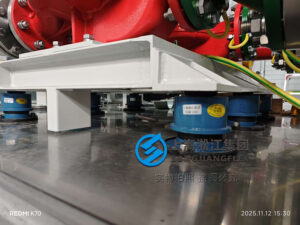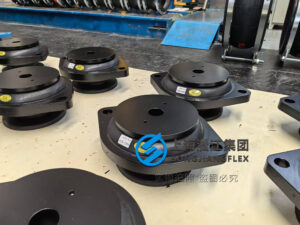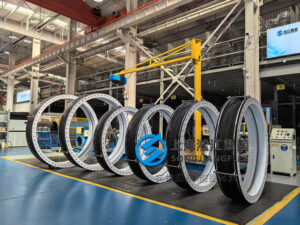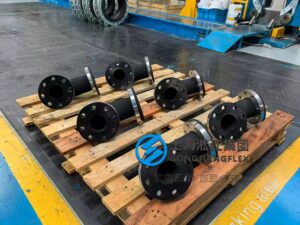Leading Paragraph
Choosing the wrong expansion joint can cause failures, costly downtime, and safety risks. Many customers wonder: what makes WCR hand-wrapped rubber expansion joints different?
Snippets Paragraph
A WCR hand-wrapped rubber expansion joint is a customized, reinforced product designed for large-diameter or non-standard piping systems. Unlike molded types, it is manually wrapped with rubber and fabric layers, offering strength, flexibility, and long service life.
Transition Paragraph
Let’s explore its features, functions, and applications in detail.
What is a WCR hand-wrapped rubber expansion joint?
WCR hand-wrapped rubber expansion joints are specially manufactured for oversized, high-movement, or non-standard pipelines. Unlike molded types, these joints are fabricated by wrapping multiple reinforced rubber layers around a mold.
Snippets: They provide excellent flexibility, vibration absorption, and adaptability in projects requiring unique dimensions and performance.
Related Content: In industries like power plants, chemical processing, and water treatment, WCR joints ensure leak-proof, vibration-resistant operation. They are an ideal solution when standard molded rubber joints cannot meet the project requirements.
Why choose a hand-wrapped expansion joint instead of a molded one?
Many buyers wonder whether hand-wrapped or molded expansion joints suit their system better.
Snippets: WCR hand-wrapped joints outperform molded joints in large-diameter, high-movement, or complex applications, offering customization and durability.
Related Content: While molded joints are economical for small, standardized installations, hand-wrapped types provide greater versatility, higher pressure handling, and compatibility with unique pipeline designs.
What materials are used in WCR expansion joints?
Material choice is critical for performance and durability.
Snippets: Common options include natural rubber, EPDM for hot water, and Viton for chemical resistance. Reinforcing fabric layers provide strength and stability.
Related Content: Selecting the right rubber ensures safety and efficiency. For example, EPDM works well with steam, while Viton withstands aggressive acids. This flexibility makes WCR expansion joints suitable for challenging environments.
Where are WCR rubber expansion joints commonly used?
These joints are widely applied in critical infrastructure.
Snippets: WCR expansion joints are used in power plants, desalination projects, chemical plants, and pump stations.
Related Content: Their ability to absorb vibration and tolerate misalignment makes them reliable in cooling water pipelines, flue gas desulfurization systems, and large-scale water supply projects.
How long do hand-wrapped expansion joints last?
Longevity is a frequent concern for engineers and buyers.
Snippets: With proper installation and maintenance, WCR expansion joints last 10–15 years under normal conditions.
Related Content: Service life depends on medium, temperature, pressure, and installation quality. Proper anchoring, avoiding overextension, and correct flange alignment significantly extend their durability compared to standard joints.
Can WCR expansion joints be customized?
Customization is a key advantage of WCR joints.
Snippets: They can be designed in various diameters, shapes, lengths, thicknesses, and rubber compounds.
Related Content: At Songjiangflex, we provide tailor-made solutions including expansion joint with tie rods and expansion joint control rods for systems requiring controlled movement and pressure resistance. This ensures reliable performance under unique site conditions.
What are the three types of expansion joints?
Expansion joints vary by design and material.
Snippets: The three main types are rubber expansion joints, metal expansion joints, and fabric expansion joints.
Related Content: Rubber joints provide flexibility and vibration isolation, metal joints handle extreme temperature and pressure, and fabric joints suit low-pressure, high-temperature gas pipelines. In civil works, expanded rubber joint filler is also used in concrete expansion gaps.
What is the function of rubber expansion joint?
The role of rubber expansion joints is essential in pipelines.
Snippets: They absorb movement, reduce vibration, minimize noise, and protect connected equipment.
Related Content: If you search “what is rubber expansion joint,” you’ll find they are indispensable in HVAC, water supply, and industrial piping. They reduce mechanical stress and extend equipment life.
How long do rubber expansion joints last?
Durability varies across designs.
Snippets: Standard molded rubber expansion joints last 5–10 years, while WCR types often reach up to 15 years.
Related Content: Factors like medium aggressiveness, temperature, and correct installation influence lifespan. Using tie rods or control rods can enhance reliability in pressurized systems.
When should you use expansion joints?
Not every pipeline requires an expansion joint, but certain cases do.
Snippets: They are needed in systems with thermal expansion, vibration, or equipment misalignment.
Related Content: Expansion joints prevent cracking, leakage, and stress in pipelines. Whether in pumps, compressors, or HVAC units, installing the right expansion joint ensures long-term stability.
What is the pressure at the rubber expansion joint?
Pressure tolerance is critical in design.
Snippets: Most rubber expansion joints handle 1.0–2.5 MPa, with reinforced WCR joints available for higher pressures.
Related Content: Adding expansion joint wire wheel accessories or support rods improves performance. At Songjiangflex, we offer tested solutions suitable for both high-pressure water and chemical systems.
How to apply an expansion joint?
Proper installation ensures reliable function.
Snippets: Align flanges, tighten bolts evenly, and allow room for movement. Avoid overextension or torsion.
Related Content: If you’re unsure how to install rubber expansion joint, follow manufacturer guidelines. Additional devices such as expansion joint with tie rods or control rods prevent overextension under high-pressure loads, ensuring safer and longer service.
Summary
WCR hand-wrapped rubber expansion joints combine flexibility, durability, and customization—making them the best choice for large-diameter and demanding pipeline projects.





